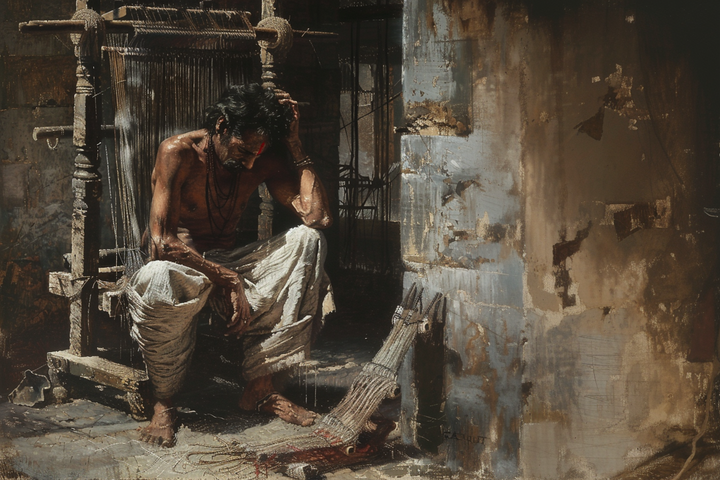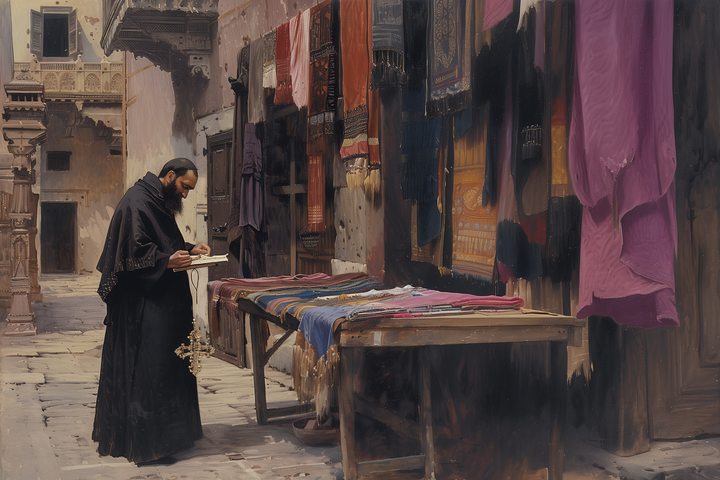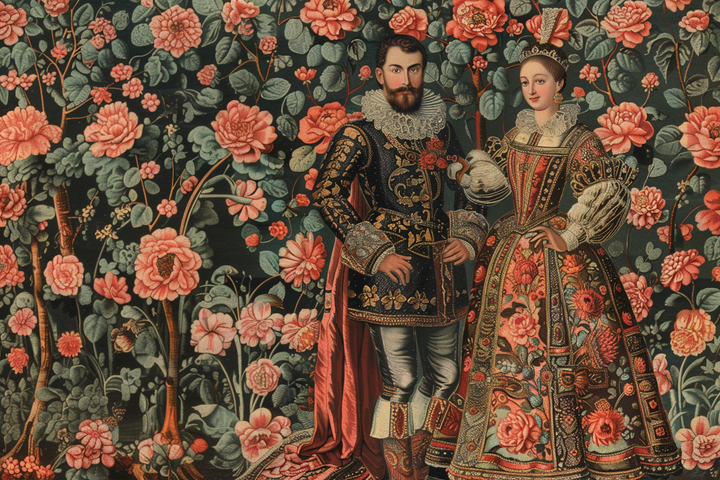How did Chintz influence trade and revolutionise fashion?
Prepare to dive into a world of forbidden fabrics, industrial espionage, and a textile revolution on the brink, as we journey to the heart of the luxurious Indian fabric Chintz that ignited a global fashion revolution.

In the previous post, we walked through the technically complex process of creating Chintz, which made it a prized possession.
How did the humble Chintz influence trade and revolutionise fashion, you ask?
Well, you see, the Indian artisans innovated to appeal to each of its distinct export markets, and until about 1770, they dominated the world production and export of these coloured cottons.
In the 15th century, European merchants crossed the seas to look for spices and jewels, yet it was the trade of these coloured cottons that turned their fortunes!
The long history of India’s chintz exports to Egypt is also well documented. Some fragments of this cloth have been carbon-dated to be more than a thousand years old.
Iran in central Asia was among the world’s greatest importers of Indian chintz, and Iranian merchants were great traders in the cloth. To please this important market, India’s cotton painters and printers created novel forms such as prayer mats and designs built around cypress trees, architectural niches, and pious Islamic inscriptions.

During this time of global trade, Indonesia was an important market for Indian chintz. Precious spices such as nutmeg, mace and cloves did not grow elsewhere at the time. Indonesian traders demanded Indian textiles in exchange for these spices. When Europeans began sailing to Indonesia from 1500 for these spices, they were obliged to barter using Indian cloth.
Only after Vasco da Gama reached Calicut in India in 1498 did the fabric become known in Europe. By around 1600, Portuguese and Dutch traders were taking back samples of Indian chintz into Europe on a small scale, but the English and French merchants began sending large quantities.
By 1650, about a million pieces of chintz were being imported into England per year, and a similar quantity was going to France and the Dutch Republic.
These brightly coloured cottons from India impacted not only how Europeans dressed themselves but also how they furnished their houses. These early imports were mostly used for curtains, furnishing fabrics, and bed hangings and covers. When it was time to replace furnishing, the oh-so-benevolent masters gave this fabric to the maidservants. The maidservants turned them into dresses and that was the beginning of a fashion revolution!


So if everything was going so well, why did the French and the English ban the use of this fabric? And how did they get their hands on the secret of making this fabric themselves?
If you enjoy the content, do leave a comment, subscribe and share with at least one other person.
We will explore that in the next part.
These are our stories in our voices. Let’s Own it...Wear it - Be unapologetic.
This is the second article of a four-part series.
First article: Which Indian fabric once sparked a revolution in trade and fashion?
Reference materials for the information in this series:
- Riello, G. (n.d.). The Rise of Calico Printing in Europe and the Influence of Asia in the Seventeenth and Eighteenth Centuries. https://www.lse.ac.uk/Economic-History/Assets/Documents/Research/GEHN/GEHNConferences/conf8/PUNERiello.pdf
- Bekhrad, J., n.d. The Floral Fabric That Was Banned. [online] Bbc.com. Available at: https://www.bbc.com/culture/article/20200420-the-cutesy-fabric-that-was-banned
- En.wikipedia.org. n.d. Chintz. [online] Available at: https://en.wikipedia.org/wiki/Chintz
- Fee, S., n.d. THE CLOTH THAT CHANGED THE WORLD: India’S Painted And Printed Cottons. [online] Rom.on.ca. Available at: https://www.rom.on.ca/sites/default/files/imce/pdf/chintz_audioguide_transcript.pdf
- Instagram. n.d. About Chintz. [online] Available at: https://www.instagram.com/p/B7AOhSsJ8Xu
- Yafa, S., 2014. Cotton. New York: Penguin Books.
- Zanten, V., 2020. Chintz 101: A Primer For The Print That’S Back In A Big Way. [online] Vogue. Available at: <https://www.vogue.com/article/chintz-prints-to-know>
- New Internationalist. n.d. Cotton - A History. [online] Available at <https://newint.org/features/2007/04/01/history>
- The Inside Blog. n.d. A Brief History Of Chintz - The Inside Blog. [online] Available at: https://www.theinside.com/blog/a-brief-history-of-chintz/
- Shahani, G. (2008). “A Foreigner by Birth”: The Life of Indian Cloth in the Early Modern English Marketplace. In: Sebek, B., Deng, S. (eds) Global Traffic. Early Modern Cultural Studies. Palgrave Macmillan, New York. https://doi.org/10.1057/9780230611818_10
- The Heritage Lab. n.d. How Indian printed and painted cotton textiles (chintz) changed the world!. [online] Available at: https://www.theheritagelab.in/indian-textile-chintz/




Comments ()